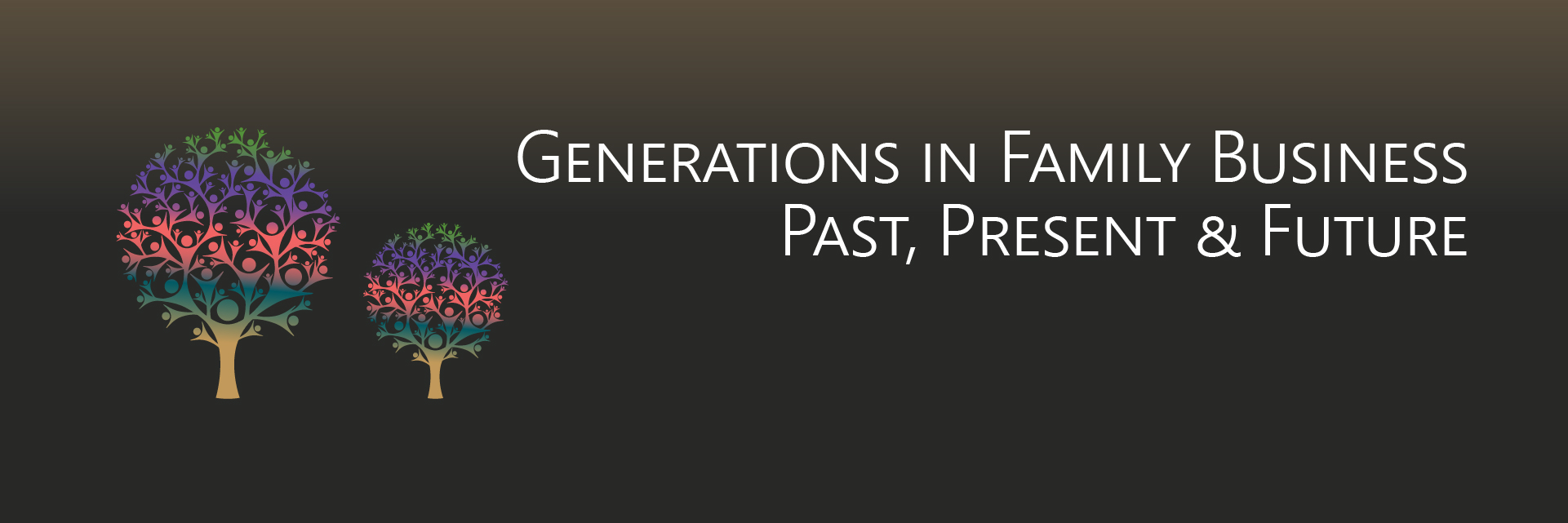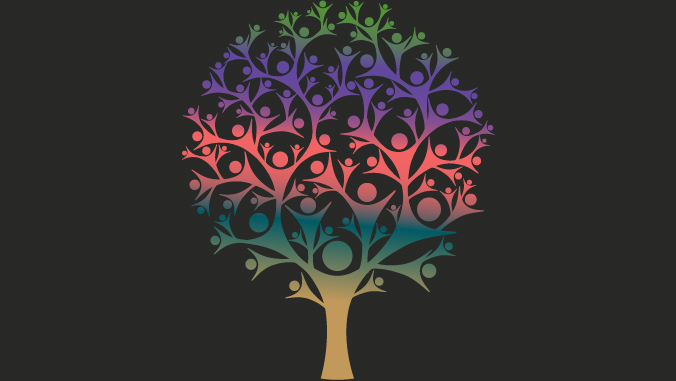
Human Resource Management Diagnostic Model: Attracting Talent
- Published
- Mar 12, 2019
- Share
In this episode, Matt Kerzner and Tim Schuster have a high-level discussion regarding attracting talent and using the Human Resources Diagnostic Model to positively impact your ability to attract great talent to your firm.
Transcript
Tim Schuster: Welcome to our podcast for “Generations and Family, Business, Past, Present, and Future.” Our hosts for this podcast are myself, Tim Schuster, a manager in The Center for Family Business Excellence and as always ...
Matt Kerzner: Good morning. Matt Kerzner and I'm a senior manager for The Center for Family Business Excellence.
TS: Let’s continue our conversation of the diagnostic model for human resource management. We discussed in our last podcast an overview of the human resource processes. Our focus is on people and results, and we are now going to continue the conversation and do a deep dive into each process. And the first one we want to talk about is acquiring human resources. Matt, let's discuss acquiring human resources and remind our listeners as to what that is.
MK: Thank you, Tim. Acquiring human resources is really the first major step of the diagnostic model of human resource management. This is where you're looking for talent for the organization. You really want to make sure that there's a good cultural fit. If it's a family business, it could be a family member or a non-family member, but you want to make sure it's a good fit for the organization. It’s really finding out the needs, skill sets, what bench strength you currently have, and then filling the gaps by acquiring the right person.
TS: Why is acquiring human resources important to an organization?
MK:You want to make sure that you have the right people in the right place at the right time. Companies are growing at a very fast pace, with either technology or with people, or through mergers or acquisitions. You want to make sure you have the right talent. If you have internal folks who you're grooming and developing—we're going to cover down the road in a different section—then developing human resources to get your internal people ready is critical. But it's even more important if you don't have the bench strength and you need to go out and look for talent. What are all the steps that you need to take to make sure that you're getting quality people?
TS: You want to make sure you have the right person for the right job. What function does this actually serve?
MK: It serves staffing, figuring out what are your needs. Organizations can do a couple of things when they have needs on first shift, second shift, third shift. They could use overtime. They could go out and get temporary employees—go to a temp agency and get people to fill in. But are you really going to have an engaged workforce? If you're working your people so much and have so much overtime to fill the needs, are they really working at 100%? If you constantly go out and get temporary employees. I don't even want to use the word employees. They are temporary contractors, essentially. Yes. They're not going to know your customers. They're not going to know your internal policies. They're not going to know the politics of the organization. And what happens is you can have a revolving door of contractors and, yes, they might serve a major purpose for you by getting product out the door. But is there a cost regarding customer service, employee engagement, turnover, or other employees who feel there's no opportunities? It really helps to figure out filling in the right positions at the right time and figuring out if this is the right thing for your organization and the right fit.
TS: I deal with that with a lot of my clients as well. Is there a contractor or a better person we hire someone full-time? Many times, instances of circling around to saying it might be better off just having a full-time person. There was because of the culture fit and having the ability to work with other people in the organization so they don't feel left out. Now, the million-dollar question. How does EisnerAmper help its clients with this?
MK: Great question. In our Center for Family Business Excellence, one of the services that we provide is helping organizations figure out their needs. A lot of times we're brought in if it's a succession planning discussion to figure out what the key positions are in the organization and getting the organization ready for either an exit of a key employee or if they need to think about a key employee. And then we do what's called a job analysis of that position, say they have been there for so long and have so much of what I call tribal knowledge, sometimes you have to replace one person with three people.
TS: Okay.
MK:One of the services that we provide is looking at jobs. I'll can also take a look at an org chart, see what positions are there, and then really talk about identifying the competencies that are really important in that function. We can identify job competencies and help understand what the skills, knowledge, and abilities that are needed for the job. We can develop what we call position descriptions to really sift through the major points of the job. Many times organizations might not know where to go to get help. We could actually help develop an outline and an ad to put on LinkedIn.
TS: We do that pretty frequently, actually.
MK:We do. And we actually offer a service here at EisnerAmper, which I’m not going to get too in depth on, but we have what's called Friends of the Firm. If you are a client of ours or you're friends with our firm, we actually have a service here where we can help post and look for high-level positions—specifically CFOs, controllers, COOs, CEOs, HR—at no cost. It's great brand value. Like I said, we can identify competencies, develop position descriptions, and develop the ad. But that's like phase one to help look at the organization. Then phase two is the actual recruitment. So with that we can actually teach the organization the process to follow, how to do the advertisements when resumes come in, how to screen resumes, how to do a telephone interview. What methodologies should we use? Now I use what's called a star model. I've mentioned this in the past with my clients and on other podcasts. Star stands for situation, task, action and results. I'm teaching a behavior-based methodology for the hiring manager to really know what to look for when they're looking for a good candidate. We can also help develop a behavioral interview guide to follow to make sure you're being consistent with all of your applicants. We do a lot of on the job assessments, provide assessments or have vendors that could actually help your organization. We do assessments to make sure that you're finding the right cultural fit. We could participate in the behavior-based interviewing and teach the methodology. We can do as little or as lot as our clients want us to do. We also do follow-ups to work with the organization to make sure that they have a process in place for the 30-, 60-, 90-day review process and follow-ups. A lot of times we'll go in and teach the methodology and they might be fine. It depends if they have an HR department or not. Sometimes they don't.
TS: I see that, too. They don't have a specific HR department so we can come in and help with the training and facilitation.
MK: That's correct. It’s as little or as much as the organization wants. This is what I like to call the concierge services of what the center can offer.
TS: I think that's great because it's a very unique field that we have here where we can help a lot of our clients participate with or help them get to whatever they need for their end result. There are a lot of services that we offer that we just didn't even mention here. If there is something that you particularly need help with, feel free to contact one of us because that's the best place to start.
MK: What's really important here, Tim, is in the next five years—I'm using five years—there's going to be a tremendous amount of—I don't want to use the word turnover—turnover of executives within businesses, family owned business, tightly held businesses or just privately held businesses where the CEO, COO, or other C-level person might be leaving the organization. It might be other critical people within the organization because the baby boomers are starting to think about retirement. You really have to start looking at your bench and what you have internally. Do you have people who are going to be ready, or do you need to go look outside? A lot of organizations don't even have org charts and job descriptions to really understand what their true needs are. They've just have their workforce, and they've been doing the work. Some organizations that we work with have people who have been around 10, 15, 20, 30 years—which is great. But the problem is they have so much tribal knowledge that when they leave, trying to find the right match or right fit is very difficult. We can help them think through the processes.
TS: Hey Matt, thank you so much for the words of wisdom. And thank you for listening to “Generations and Family Business Past, Present and Future” as part of the EisnerAmper podcast series. If you have any questions or there's a topic you'd like us to cover, email us at contact@eisneramper.com. Visit EisnerAmper.com for more information on this and a host of other topics. We look forward to having you listen in on our next EisnerAmper podcast.
Also Available On
More in this Series

Human Resource Management Diagnostic Model

Human Resource Management Diagnostic Model: Developing Human Resources

Human Resource Management Diagnostic Model: Rewarding & Recognizing Talent

Human Resource Management Diagnostic Model: Maintaining Human Resources

Human Resource Management Diagnostic Model: Human Resource Processes

Human Resource Management Diagnostic Model: External/Internal Environmental Influences
What's on Your Mind?
Start a conversation with Timothy
Receive the latest business insights, analysis, and perspectives from EisnerAmper professionals.












